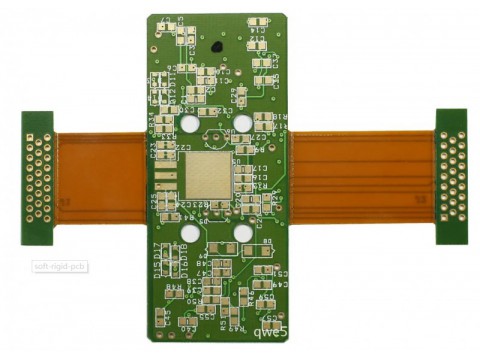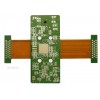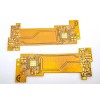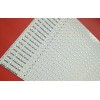Rigid-flex board (FPCB) is a circuit board with the characteristics of PCB and FPC, which combines flexible circuit boards and rigid circuit boards processed by lamination.

Production:
The production of FPCB should have both FPC production equipment and PCB production equipment. First, the electronic engineer draws the circuit and shape of the flexible board according to the requirements, and then sends it to the factory that can produce the flexible board, and the CAM engineer processes and plans the relevant documents, and then arranges the FPC production line. FPC and PCB production lines are required to produce PCBs. After these two types of soft boards and hard boards come out, according to the planning requirements of the electronic engineer, the FPC and PCB are seamlessly pressed together by a pressing machine, and then a series of detailed links are finally produced. It has become a rigid-flex board. It is a very important link, because the soft-rigid board is difficult and there are many details. Before shipment, it is generally necessary to conduct a full inspection because of its relatively high value, so as to avoid the loss of relevant interests for both the supplier and the buyer.

Processing:
1. Selection of materials
2. Production process and control of key parts
2.1. Production process
2.2. Graphic transfer of inner monolithic
2.3. Multilayer positioning of flexible materials
2.4. Lamination
2.5. Drilling
2.6. Desmear and embossing
2.7. Electroless copper plating, electroplating copper
2.8. Surface solder mask and solderability protective layer
2.9. Shape processing

Application:
1. Industry
Industrial uses include rigid and flexible bondboards for industrial, military and medical applications. Most industrial parts require precision, safety and no fragility. Therefore, the required characteristics of soft and hard boards are: high reliability, high precision, low impedance loss, complete signal transmission quality and durability. However, due to the high complexity of the process, the output is small and the unit price is quite high.
2. Mobile Phone
In the application of mobile phone software and hardware boards, the common ones are folding mobile phone turning points, camera modules, keyboards, radio frequency modules, etc.
3. Consumer Electronics
In consumer products, DSC and DV represent the development of soft boards and hard boards, which can be divided into two main axes: performance and structure. In terms of performance, flexible boards and rigid boards can connect different PCB rigid boards and components in three dimensions. Therefore, under the same linear density, the total usable area of the PCB can be increased, its circuit carrying capacity can be relatively improved, and the signal transmission limit and assembly error rate of the contacts can be reduced. On the other hand, because the soft and hard board is light and thin, it can bend the wiring, so it is of great help to reduce the volume and weight.
4. Car
In the use of soft and hard boards in cars, it is usually used to connect the buttons on the steering wheel to the main board, the connection between the vehicle video system screen and the control panel, the operation connection of the audio or function keys on the side door, and the image of the reversing radar System sensors (including air quality, temperature and humidity, special gas conditioning, etc.), vehicle communication systems, satellite navigation, rear seat control panels and front controller connection boards, vehicle exterior detection systems, etc.

PCB Delivery Date:

Manufacturing Process:
Copper clad plate cutting → Drilling → Copper plating → Outer layer graphic production → Resistance welding → Text → Surface treatment → Appearance processing → Electrical inspection → Appearance inspection → Packaging → Shipping. https://www.ronghuaindustry.com/rigid-flex-board-fpcb Email: sales@ronghuaindustry.com








